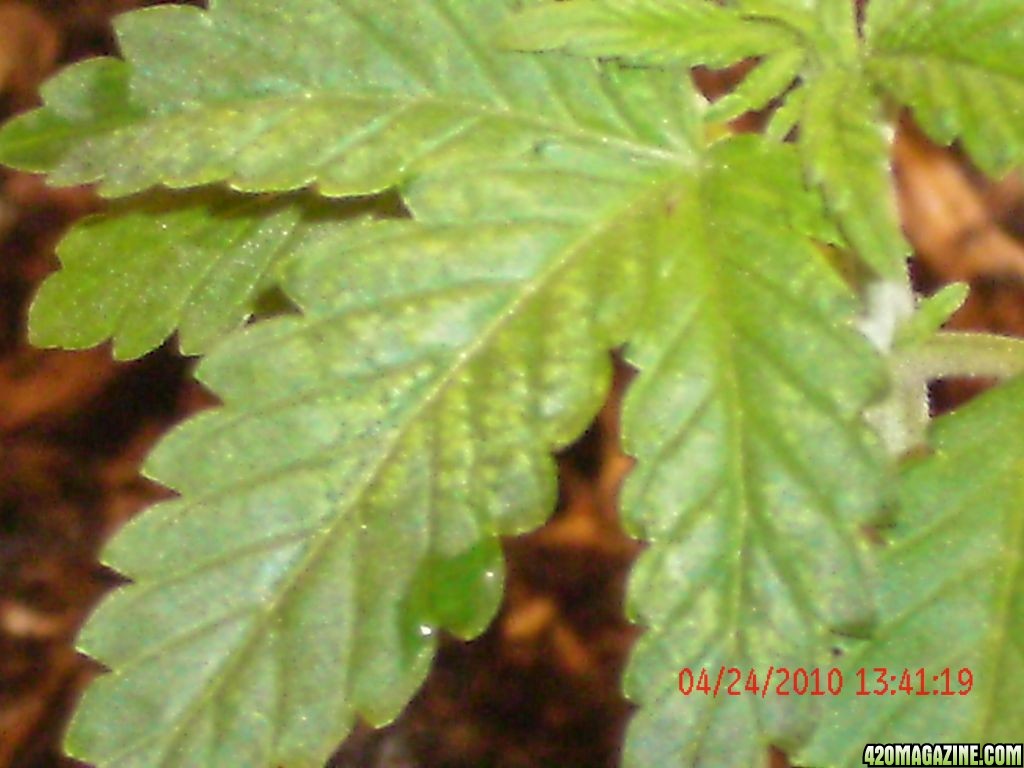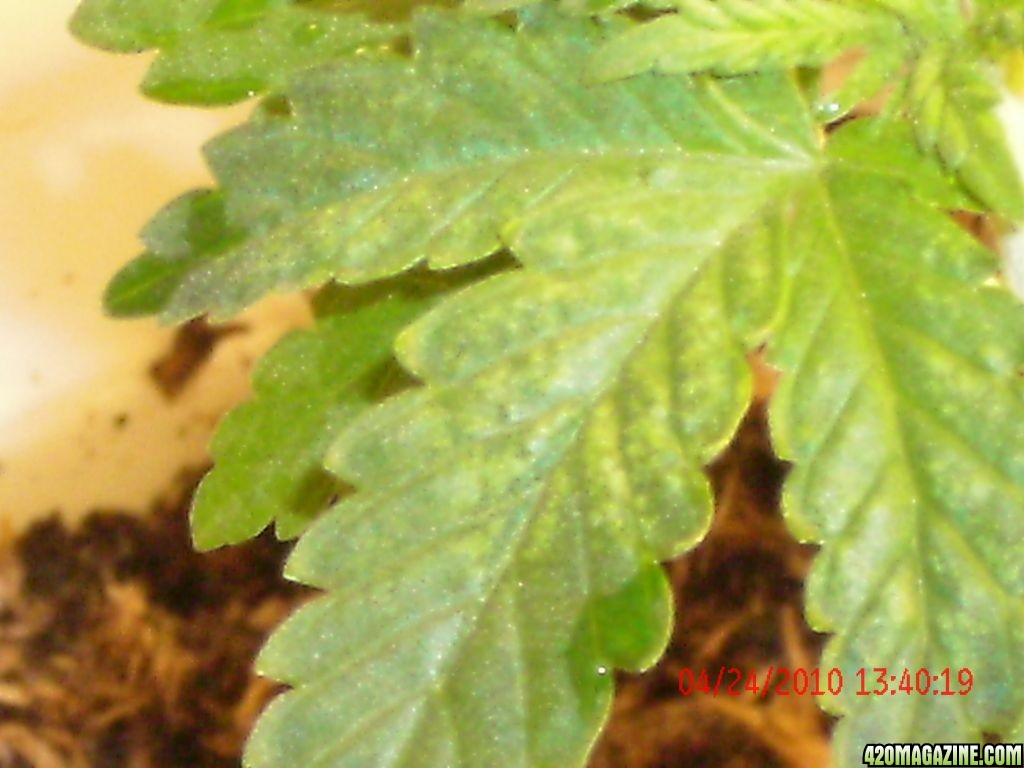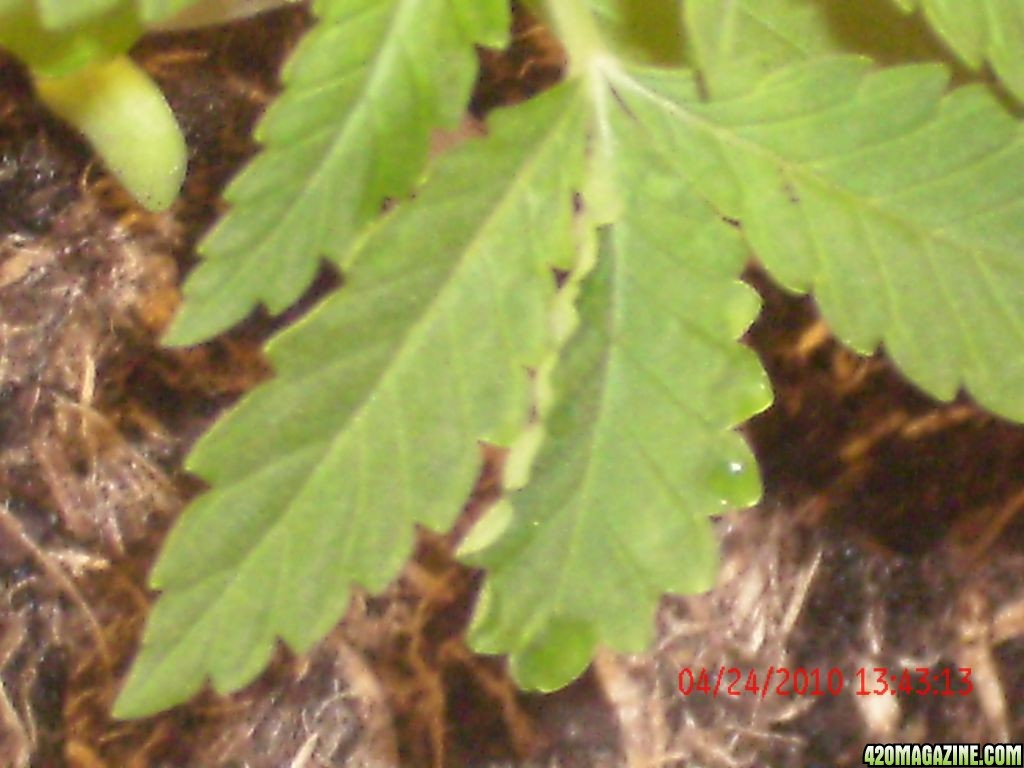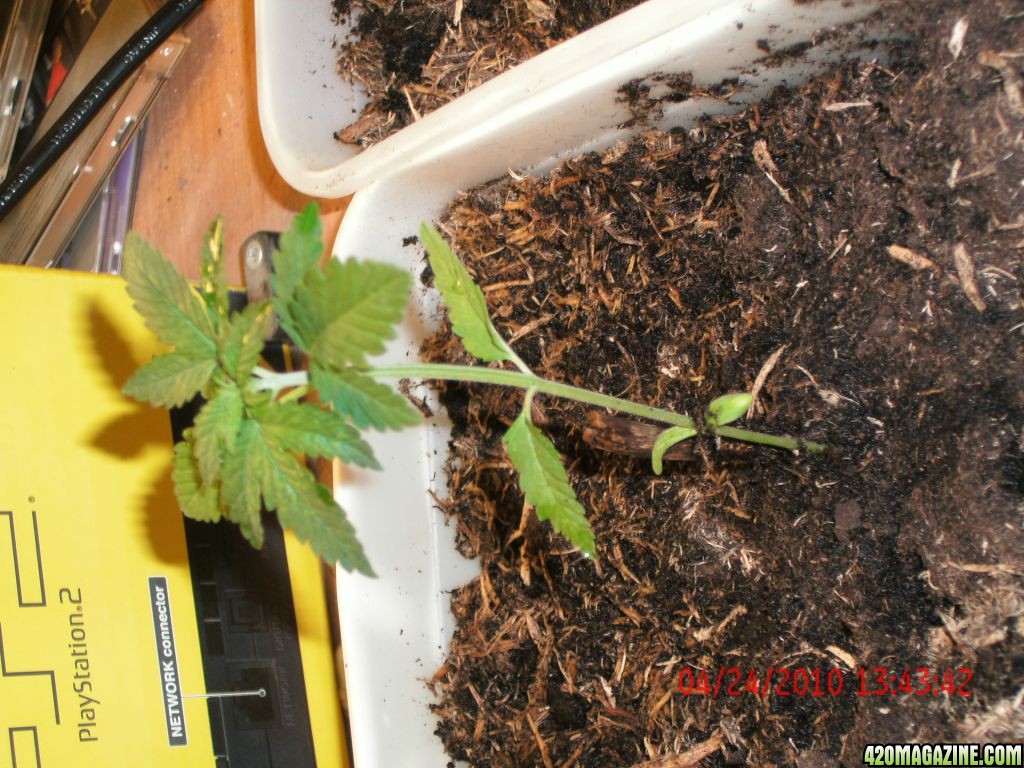Re: Noob grower - zero budget - some sings of trouble.
Are you are talking about the discoloring in the middle of the leaf? Or those really white small dots? Those white dots seem unnatural, i thought they were glare from water or a camera thing at first.
Dont quote me on this but I think there is a website you can go to that has all the information about the tap water in your county/city. It might have ph listed there. I know you said money was tight, but you can buy one of those ph testers with the bottle of green stuff for pretty cheap if you are really concerned about the ph of your water and cant find an answer. They aren't the best but they give you a good idea.
Another thing you are going to want to have or look into for your future grows or even this grow is Powdered Dolomite Lime. When you include this in your soil mix it really helps keep the ph stable. You can also top dress with it if you are seeing deficiencies it just takes a little longer to work its magic. Its pretty cheap too and if you cant find the powder you can get the pebbles and crush it yourself. You can probably get 10-15 grows worth for like 5-10 bucks.
Hey and thanks for chiming in on that other thread. I appreciate it, I was starting to feel like an asshole for even trying to help. Also I know it can be difficult to be open about stuff like that. So right on man

Also just in case you haven't seen it. This is probably one of the most useful threads on the site.
Cannabis Plant and Pest Problem Solver - Pictorial
Here is an article on leaf curling that will help you diagnose your plants.
Leaf curl/cupping & leaf margin rolling-signs of Plant Moisture Stress
Quite often I hear groans from folks having leaf problems -> “Help, my leaves are cupping and the leaf edges are turning brown!”, or, “My plant's leaf tips are curling down and turning black ....what's wrong?” Unless insect damage has occurred or the plant is suffering from a severe case of calcium deficiency, the plant is trying to tell you that it is water stressed. It's hard to tell *exactly* what the culprit is, and unfortunately the “solution” the grower chooses many times is not the right one. A mis-diagnosis only serves to make matters worse by promoting further decline. I’ll try to cover some of the more common causes that can induce these common symptoms and try to offer a few simple solutions. The ultimate and correct solution is in the hands of the grower.
1. Over-fertilizing - the most common cause of leaf cupping aka leaf margin rolling, leaf margin burn, and leaf tip curl/burn is the overzealous use of too much plant food in relationship to factors such as plant vigor and rate of growth. The first unit of a plant to show moisture stress is the leaf at its margins and/or tips, reflected by margin rolling (cupping) or burning. A hard, crispy feel to the leaf frequently occurs as well, as opposed to a soft and cool feel of a happy leaf. When you have a high concentration of salts in solution (in the root medium) compared to the salinity levels found in the plant’s tissue, water is actually drawn out of the plant across the root gradient in order to fix the ppm imbalance. IOW, this is a natural, osmotic response that serves to equalize salinity levels on both sides of the root’s epidermal gradient. Back off on the amount and/or frequency of plant food. Too much plant food can also burn the roots, especially the sensitive root tips, which then creates another set of problems. Note - as soil dries, the concentration of the remaining salts rises further exacerbating the problem.
2. High Heat - the plant is losing water via it’s leaves faster than what can be replaced by the root system. The leaf responds by leaf margin cupping or rolling up or down (most times up) in order to conserve moisture. A good example is reflected by the appearance of broad-bladed turf grass on a hot summer day, high noon, with low soil moisture levels - the leaf blade will roll upward/inward with the grass taking on a dull, greyish-green appearance. Upon sunrise when moisture levels have returned to normal, the leaf blade will be flat. Lower the heat and concentrate on developing a large, robust root system by practicing sound plant culture. An efficient and effective root system will go a long way to prevent heat induced leaf dessication and leaf margin curling. One short episode of high heat is enough to permanently disable or destroy leaf tissue and cause a general decline in the leaves affected, which often occurs to leaves found at the top of the plant. The damaged leaf (usually) does not fully recover, no matter what you do. Bummer in the summer. One can only look to new growth for indications that the problem has been corrected.
3. High Light - yes, it’s true, you can give our faves too much light. Cannabis does not receive full sun from sunrise to sunset in its natural state. It is shaded or given reduced light levels because of adjacent plant material, cloudy conditions, rain, dust, twilight periods in the morning and late afternoon, and light intensity changes caused by a change in the seasons. Too much light mainly serves to bleach out and destroy chlorophyll as opposed to causing leaf cupping, but it often goes hand-in-hand with high heat for indoor growers. Again, back off on the light and concentrate on developing/maintaining an efficient and robust root system.
4. Overwatering - for those doing soil, this practice only serves to weaken the root system by depriving the roots of proper gas exchange. IOW, the roots are not getting enough oxygen which creates an anerobic condition inducing root rot and root decline with the end result showing up as leaf stress, stunted growth, and in severe cases, death. <gasp!> Overwatering creates a perfect environment for damp-off disease, at, or below the soil line. Alot of times folks think the plant is not getting enough plant food (which it can't under such adverse conditions), they add more nutes for a "curative", and just add insult to injury.
5. Underwatering - not only is the plant now stressed due to a low supply of adequate moisture, but carbohydrate production has been greatly compromised (screwed up). Step up the watering frequency, and if need be, organic growers may need to water from the bottom up until moisture levels reach a norm throughout the medium. If the pot feels light to the lift - it’s time to water. Don’t wait until the soil pulls away from the sides of the pot or leaves droop before you water. And of course, leach once in a while to get rid of excess salts.
All of the above issues relate to a plant's internal cell turgor or cell water pressure. If water pressure within the plant's stem and leaf cells are positive, the plant will look strong and stocky with flat leaves that are cool to the touch due to good transpiration from the leaf surface. By the same token, if the water pressure is not up to par, whereby water is being extracted from the plant and not replenished like it should be.... the leaves and/or stems will droop.
Happy gardening,
Uncle Ben













 aint no expert
aint no expert